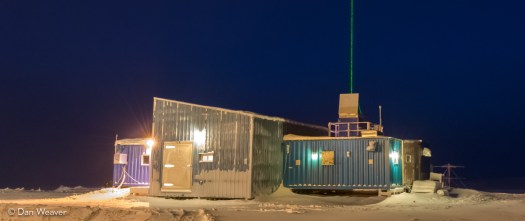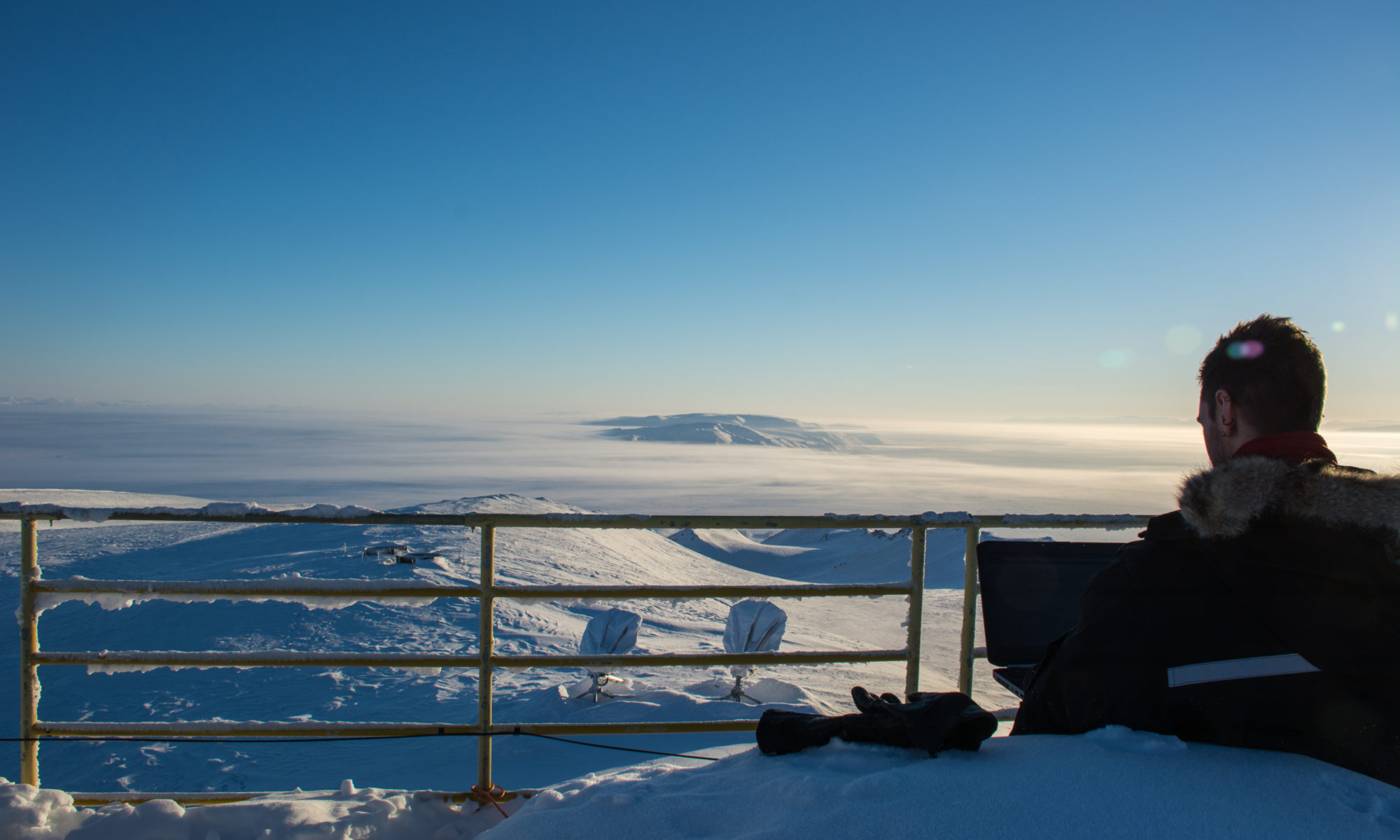I’ve been asked many times by friends, audience members at public talks, and journalists:
“Why is PEARL needed now that Canada has CHARS?”
The question came up again recently because of discussion about the Trudeau government’s decision not to renew or replace the Climate Change and Atmospheric Research (CCAR) program, which had funded a range of research projects – including PEARL. This is the latest development in a long string of cuts to Canadian climate science. Top scientists in the field have described the current funding situation as a “crisis”.
Both the Harper and Trudeau governments have pointed to CHARS as a reason to commend their efforts in the areas of Arctic and climate research. I support CHARS. It’s a world-class facility that will contribute great science. But CHARS doesn’t accomplish what PEARL or the CCAR program does. In this post, I’ll highlight some of the major differences.
First, I will briefly describe what each of those acronyms refer to. Both PEARL and CHARS are permanent research stations in the Canadian Arctic. But they are quite different entities.
CHARS is the Canadian High Arctic Research Station, a new $204 million federal government facility with an annual budget of $26.5 million. Its focus is on ecology, sustainability, and northern communities. Located in Cambridge Bay, Nunavut, CHARS is part of Polar Knowledge Canada (POLAR), an agency of Crown-Indigenous Relations and Northern Affairs. POLAR’s headquarters is located in the main CHARS building.

PEARL is the Polar Environment Atmospheric Research Laboratory, an atmospheric observatory located near Eureka, Nunavut on Ellesmere Island. Originally built as the Arctic Stratospheric Ozone Observatory (AStrO) in 1992 by Environment Canada, it re-opened in July 2006 as PEARL under the leadership of Canadian university scientists (full time AStrO operations ended in 2001 due to budget cuts). Over the last decade, its capabilities have grown significantly. It is now one of the world’s most comprehensive and sophisticated atmospheric observatories in the Arctic. At 80°N, it is the northernmost site for many types of ground-based atmospheric observations. PEARL has a budget of approximately $1 to 1.5 million/year.

Immediately it’s clear there are big differences. CHARS is a major government facility with a broad mandate; PEARL is a remote academic-run atmospheric observatory.
I’ll add a few details about the key differences: location, science, and scale.
The location.
The Canadian Arctic is huge. While both PEARL and CHARS are in Nunavut, PEARL is 1200 km north of CHARS. That’s roughly the distance between Toronto and Halifax or between Calgary and Yellowknife.

Cambridge Bay is a community of 1800 people and has regular commercial flights from Yellowknife.

On the other hand, Eureka is a remote research outpost that cannot be reached by commercial flights. When PEARL researchers travel to the facility for fieldwork, they take small charter plane from Yellowknife, stopping in Cambridge Bay and Resolute on their way north to Eureka to refuel.
Their different locations reflect their different scientific priorities.
The Cambridge Bay location is good for biologists and ecologists because it is close to many different ecosystems as well as caribou and muskox populations of interest to biologists. It also has a central Arctic location, which will help it to support field work in the surrounding region.

While there would be value in doing atmospheric measurements at CHARS, Cambridge Bay isn’t an ideal place to do all the research done at PEARL. For example, the location is too far south for it to be within the Polar Vortex regularly during the February/March window when sunlight returns and ozone depletion chemistry occurs. AStrO/PEARL was built in Eureka because scientists needed measurements that far north.

Cambridge Bay can’t offer the same ability to do satellite validation, either. Eureka is a sweet-spot, where many Canadian and international satellites frequently pass overhead due to their orbital geometry.

Lastly, the environment is simply different at CHARS than at PEARL. As noted, they are quite distant from one another. If you want to measure the atmosphere of the high Arctic, you have to go there.
The type of science they do.
CHARS’s original priorities were resource development, science, and the development and commercialization of technology. When the Trudeau government came into power, they shifted that mandate away from resource development and technology commercialization and towards northern communities and sustainability.
The physical lab space of CHARS was designed with biology in mind. For example, there is a large animal necropsy facility (complete with a crane for loading large animals), genomics lab, as well as a cold lab for studying ice cores and a growth chamber for studying plant growth. (The CHARS floor plan is online here.) Indeed the CHARS Chief Scientist, Dr. Martin Raillard, is formerly a field scientist for Parks Canada and the Canadian Wildlife Service. His expertise aligns very well with the station’s priorities.

There are no rooftop labs at CHARS. Skyward-looking science was not part of the CHARS design. There are no astronomy or atmospheric instruments, for example. The promotion of CHARS in the media and elsewhere often describe it as a facility for “Arctic science”. I think this is why I keep getting asked about CHARS: people get the mistaken impression that it is able to do everything involving science in the Arctic.

I’m certain there are atmospheric scientists keen to potentially set up instruments at CHARS. It could be a useful addition to existing networks. But CHARS would have to have an interest in doing so, and such a collaboration wouldn’t replace other observation sites like PEARL.

PEARL doesn’t have facilities for biology or ice core analysis. But it does have world-class instruments that measure the high Arctic atmosphere and that contributes to studies of atmospheric chemistry, climate, aerosols, and many other related topics. None of these measurements are done at CHARS.

Scale
CHARS is a larger operation than PEARL. The annual budget for CHARS operations is $26.5 million. There is over 50 staff. The site has space for dozens of scientists, including housing for about 50. There is also a large public space inside and outside the main building aimed at fostering connections with the surrounding community. Science done through CHARS involves fieldwork across the territories, not only the Cambridge Bay site.
Nunatsiaq News reports that the government spent $1 million on artwork that was installed outside the main CHARS building (the “Polar Iconic Structure” by Wei Yew). I fully support public art. It looks really great. But its cost illustrates the different the scale of these two facilities. The money spent on that art installation could fund PEARL for a year.
PEARL, when fully funded, operates on a budget of about $1.5 million. The current Minister of Science, Kirsty Duncan, once called the amount needed to operate PEARL “a pittance” for what it accomplishes. (Indeed, she recently helped arrange temporary support to prevent PEARL from closing due to budget cuts to Canadian climate and atmospheric science funding.)
PEARL has one major scale advantage over CHARS: some of its key datasets go back 25 years. These long-term measurements are extremely valuable for scientists looking at how the atmosphere and climate are changing over time. CHARS will build up datasets over time, but for the moment, they’re still in year one.

PEARL has an extensive suite of instruments spread across multiple locations near Eureka. Often, only one or two technicians are on site. Researchers at Canadian universities connect to instruments remotely through the world’s most northern geostationary satellite internet link.

For a few weeks at a time, campaign teams of 2 to 10 researchers conduct more intensive operations on site at PEARL. Although the PEARL Ridge Lab has two rooms with bunk beds, PEARL researchers typically sleep and eat at the nearby Eureka Weather Station.
Summary
POLAR/CHARS could decide to expand its activity to include atmospheric measurements. That could be beneficial for both CHARS and the Canadian atmospheric and climate community. What is far less clear is whether POLAR/CHARS could expand to become a source for funding the type of research formerly supported by CCAR and other lost programs. Since PEARL offers capabilities CHARS lacks, it could be a complementary match. But this would not be an easy fit, given the differences in structure and priorities. NSERC, the organization that funds physical sciences in Canada, recommended renewal of CCAR.
There are many fields of science that contribute to understanding the vast Canadian Arctic. CHARS is a huge investment in northern science that should be celebrated. But we also have to recognize what it doesn’t accomplish, and the value of other research projects going on across the region as well. At the moment, there is a significant gap in Canadian climate science funding left by the Trudeau government’s cancellation of CCAR. CHARS doesn’t fill it. At least, not in its current form. In my view, Canadian science is best served by supporting both CHARS and PEARL as separate entities that each contribute important research in the Canadian Arctic.
References & more information:
“About Polar Knowledge Canada.” URL: https://www.canada.ca/en/polar-knowledge/behindthescenes.html
CANDAC website. URL: www.candac.ca
CHARS website. URL: https://www.canada.ca/en/polar-knowledge/constructingstation.html
CHARS floor plans. URL: https://www.canada.ca/en/polar-knowledge/constructingstation/charsfloorplan.html
CHARS Act. URL: http://laws-lois.justice.gc.ca/eng/acts/C-17.8/FullText.html
“CHARS: Canada’s Arctic research hub.” Canadian Geographic, July 22, 2015. URL: https://www.canadiangeographic.ca/article/chars-canadas-arctic-research-hub
“Canada Announces Request for Proposals for high Arctic Research Station.” Foreign Policy Association, September 26, 2011. URL: https://foreignpolicyblogs.com/2011/09/26/canada-announces-request-for-proposals-for-canadian-high-arctic-research-station/
“Canada’s new Arctic research station readies for its grand opening.” University Affairs, September 19, 2017. URL: https://www.universityaffairs.ca/news/news-article/canadas-new-arctic-research-station-readies-grand-opening/
“CHARS steamrolls into Nunavut’s Cambridge Bay.” Nunatsiaq News, October 30, 2017. URL: http://www.nunatsiaqonline.ca/stories/article/65674chars_steamrolls_into_nunavuts_cambridge_bay/
Fogal, P., LeBlanc, L. M., and Drummond, J.R.: The Polar Environment Atmospheric Research Laboratory (PEARL): Sounding the Atmosphere at 80 North. Arctic, 66 (3), 2013. Stable URL: http://www.jstor.org/stable/23594645
Talk slides by Dr. Raillard, “CHARS: Updates and opportunities for collaboration”, available on POLAR’s website: http://www.polarcom.gc.ca/sites/default/files/canadian_high_arctic_research_station_updates_and_opportunities_for_collaboration_-_m._raillard.pdf
“Nunavut’s Canadian High Arctic Research Station gets set for 2017 launch.” Nunatsiaq News, September 19, 2016. URL: http://www.nunatsiaqonline.ca/stories/article/65674nunavuts_canadian_high_arctic_research_station_readies_for_july_1_2017/




















